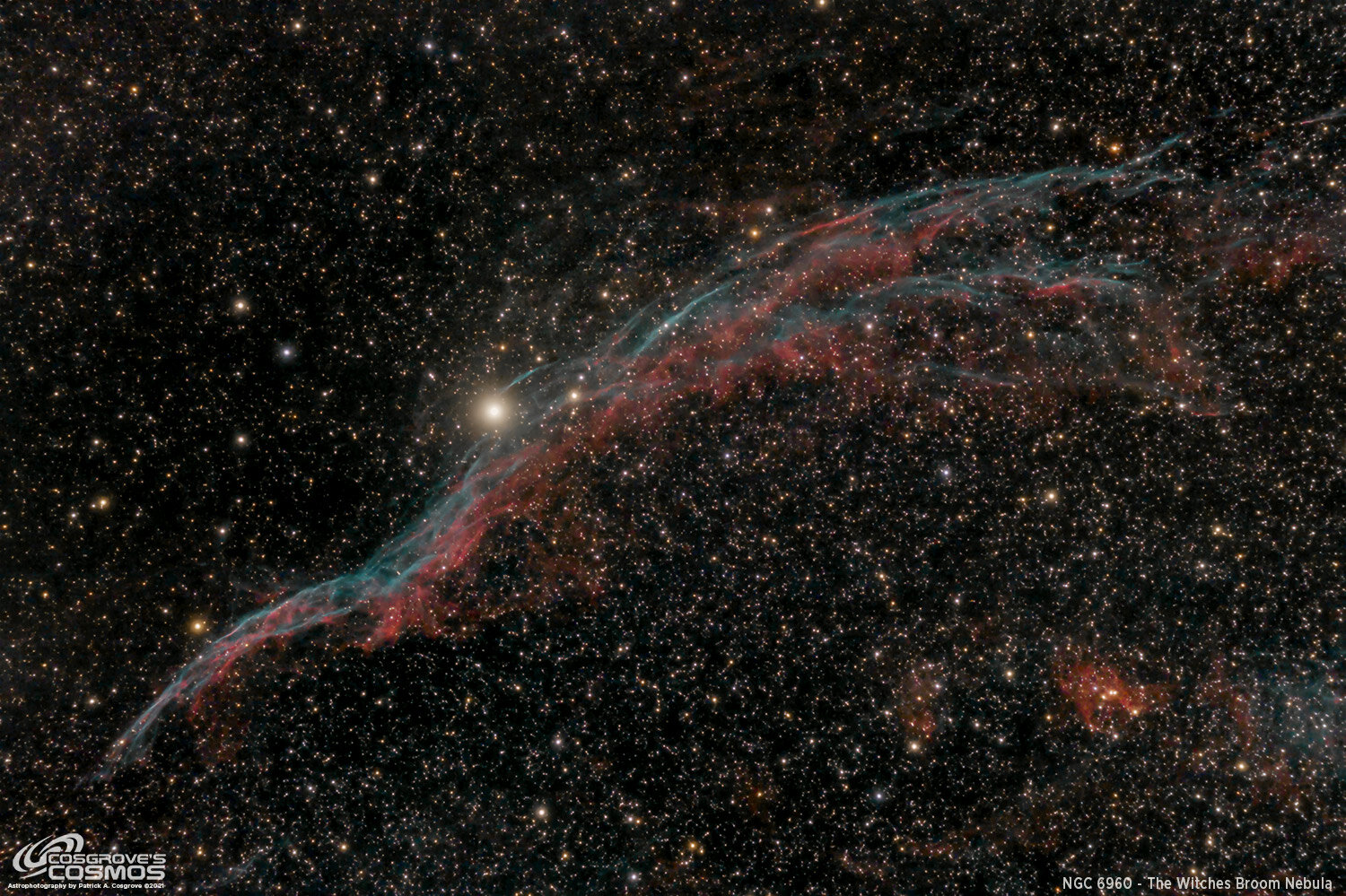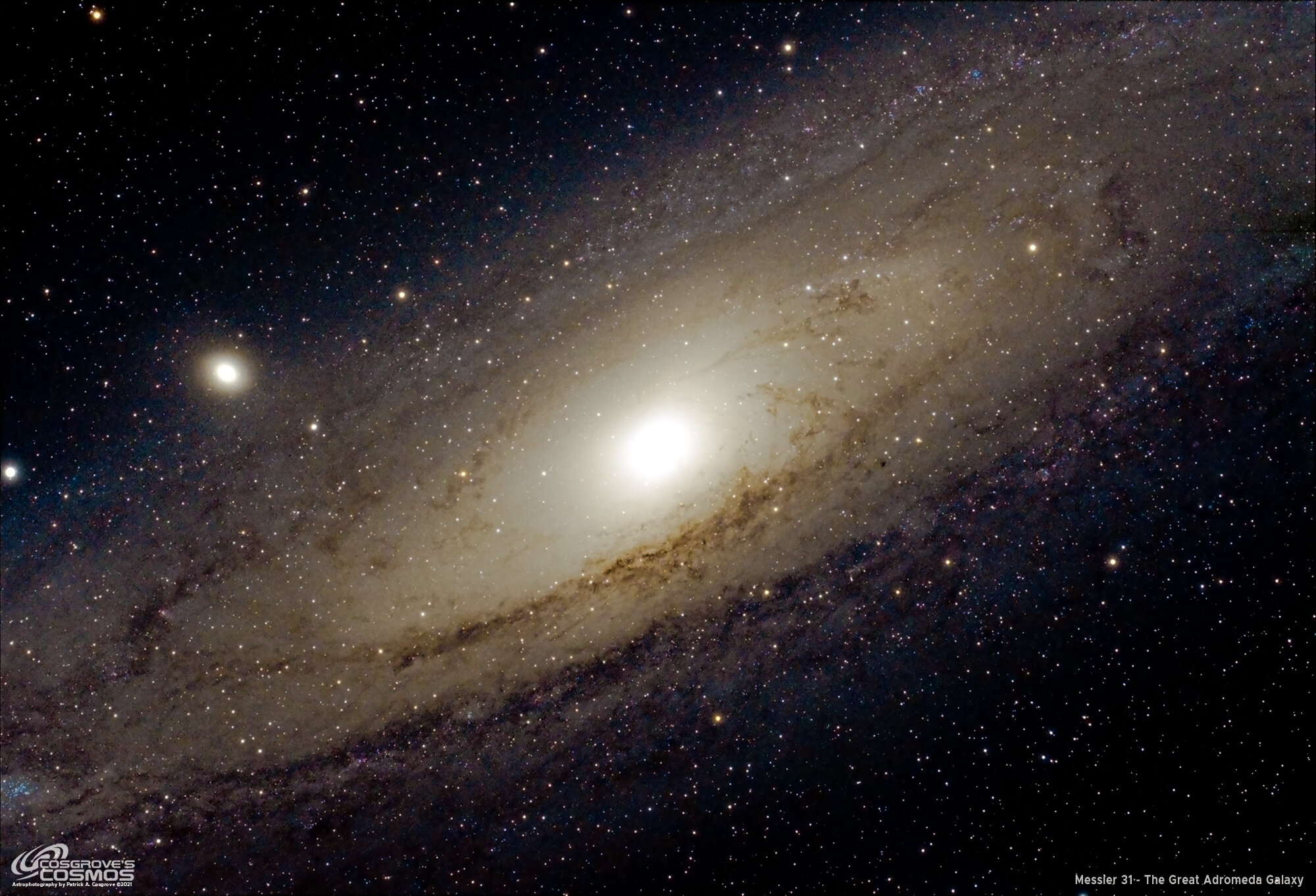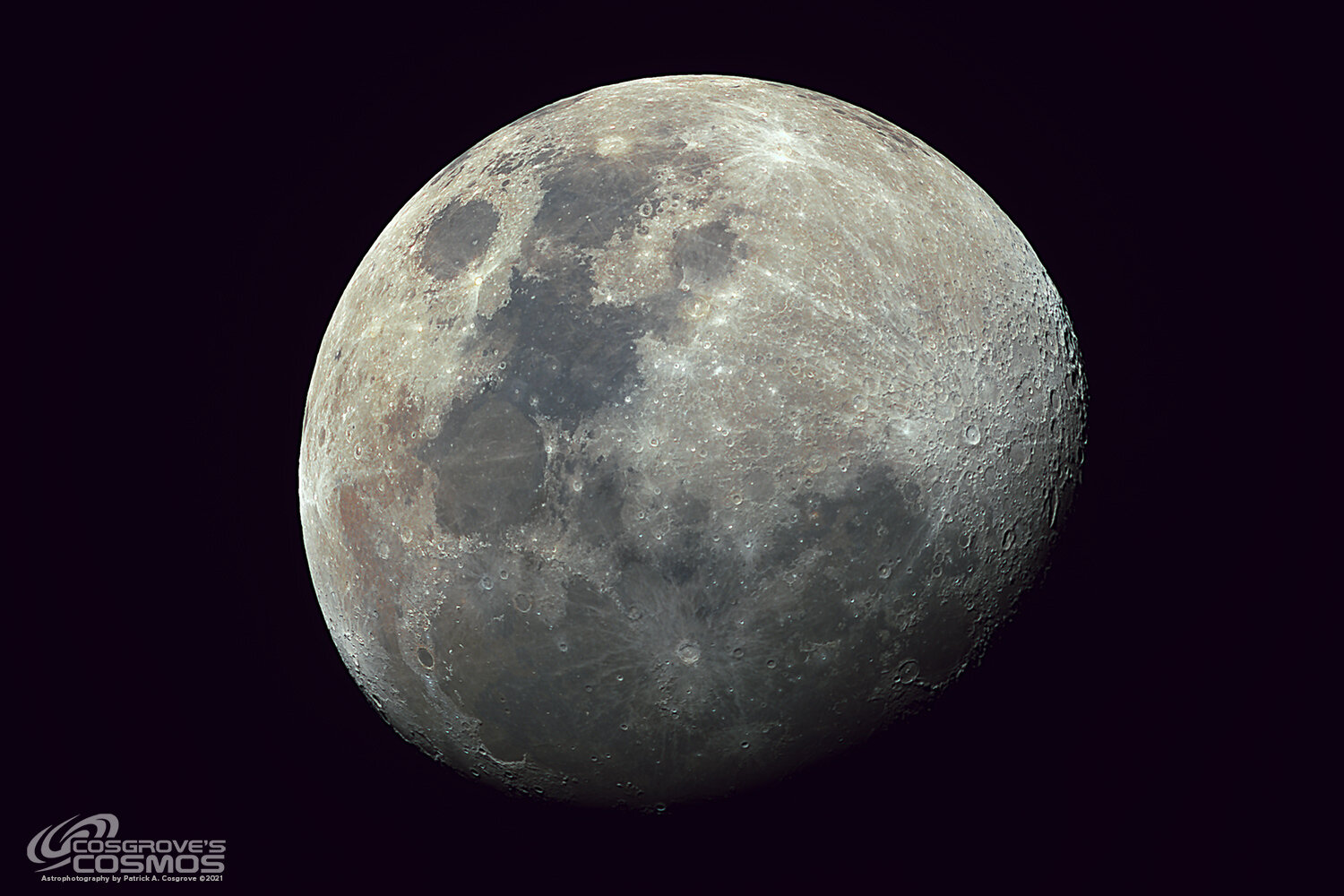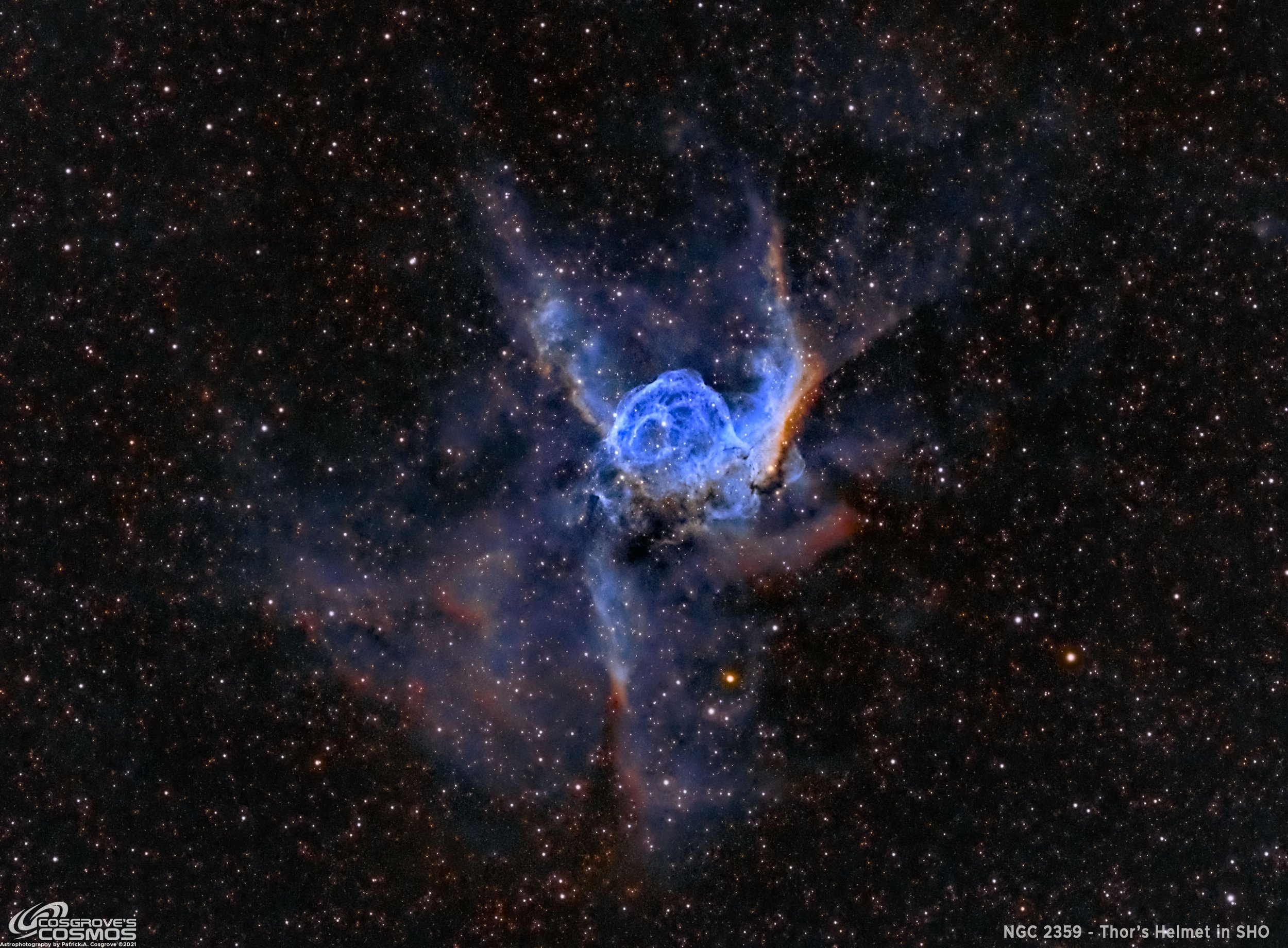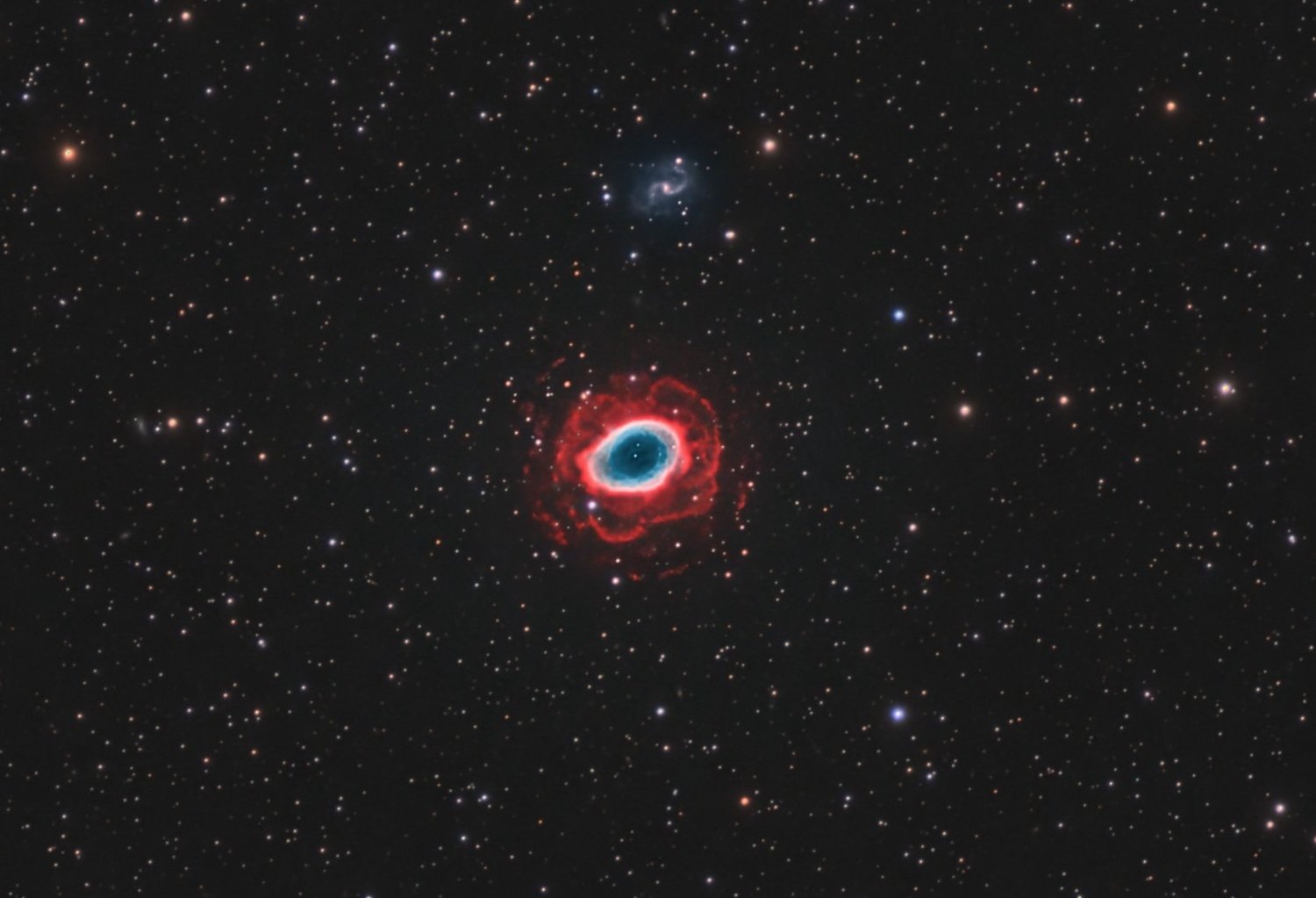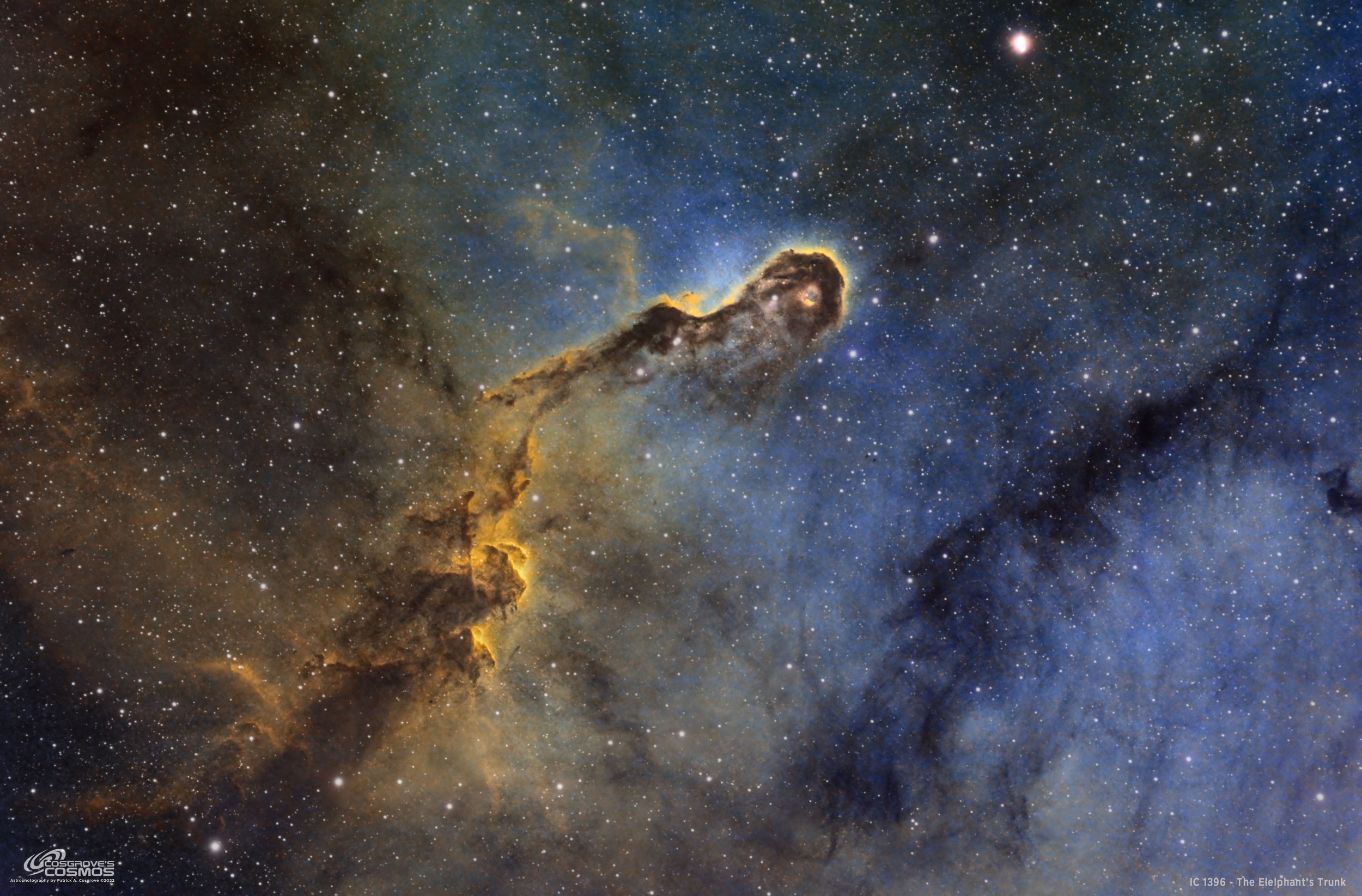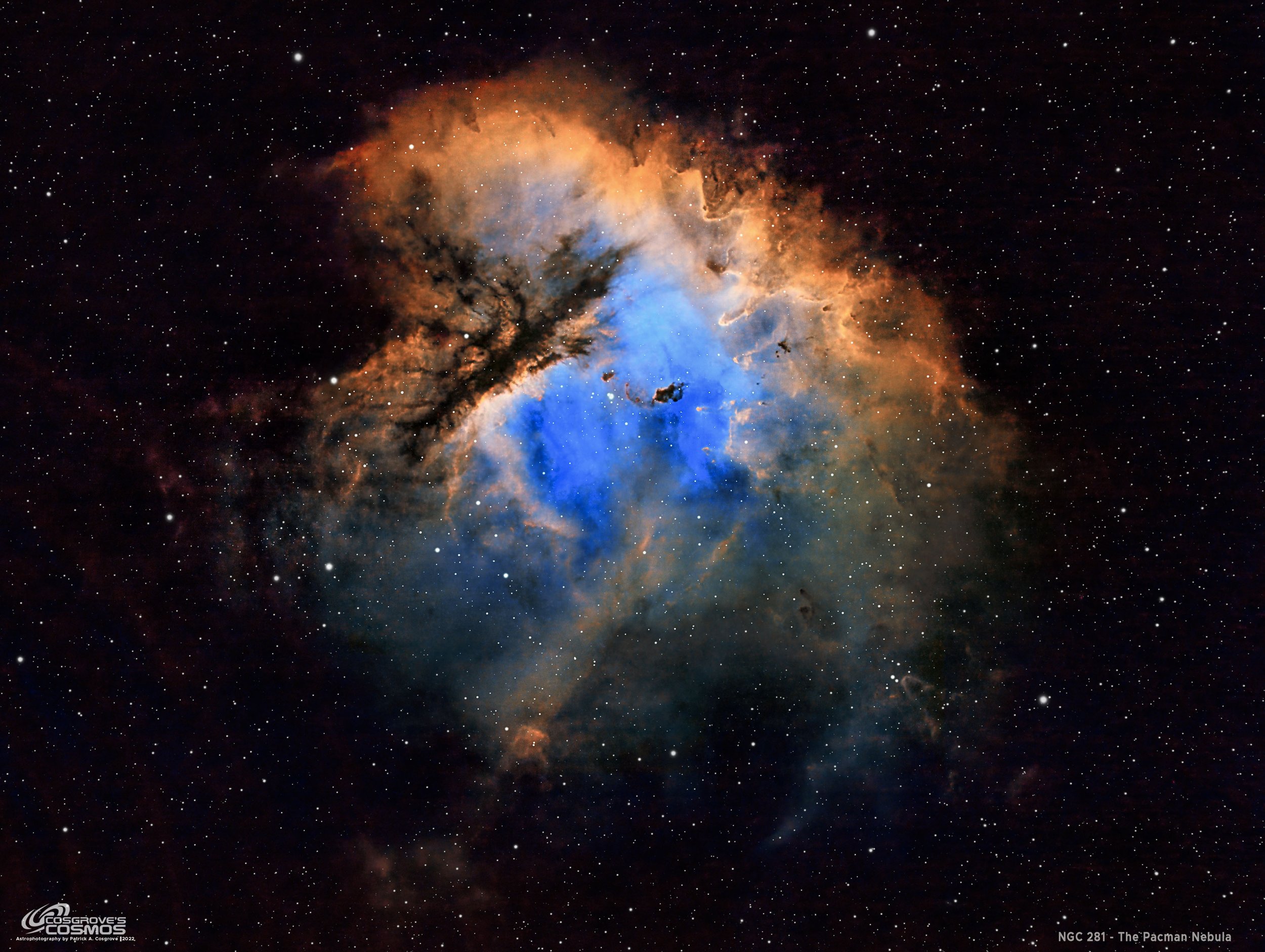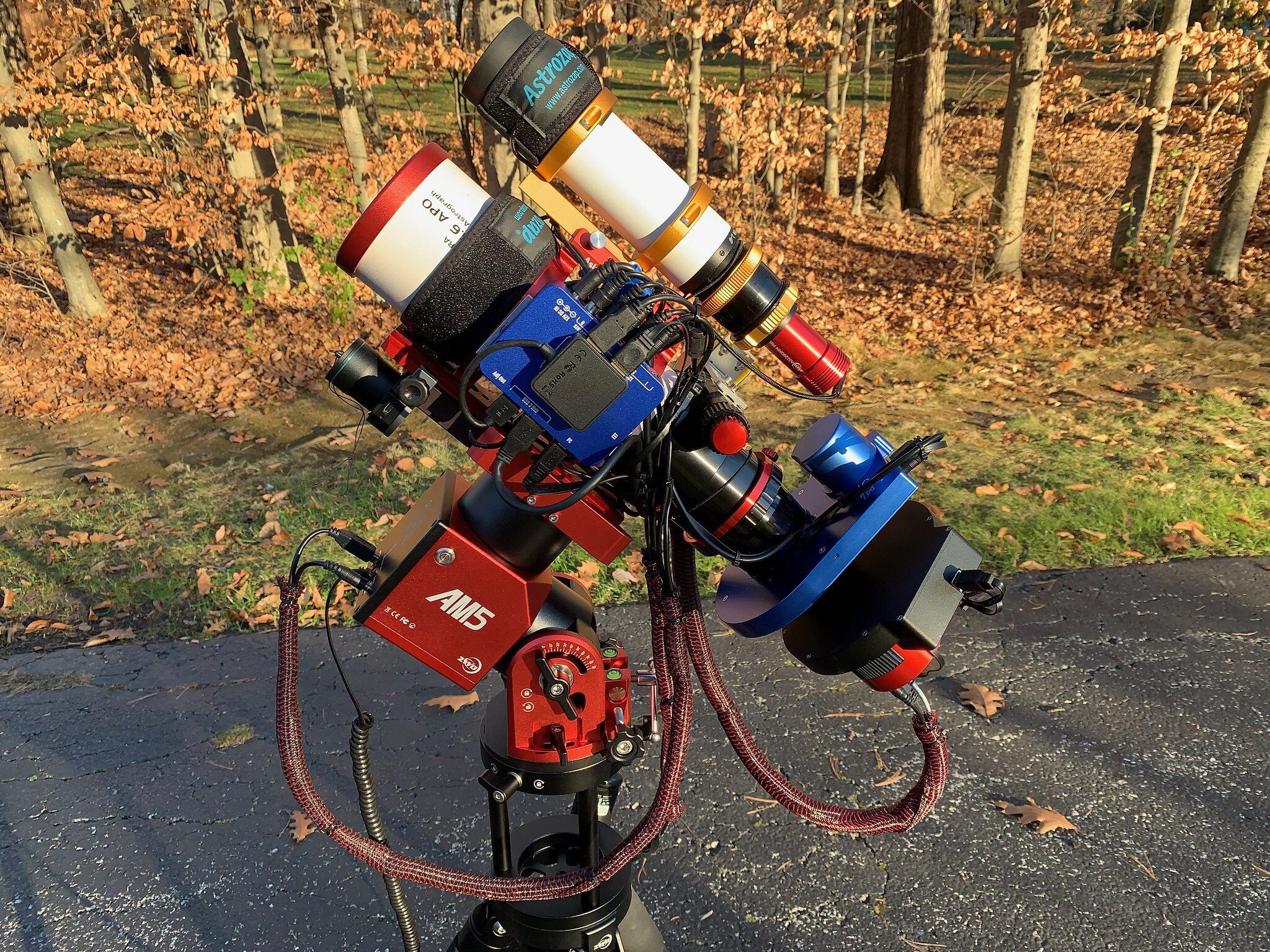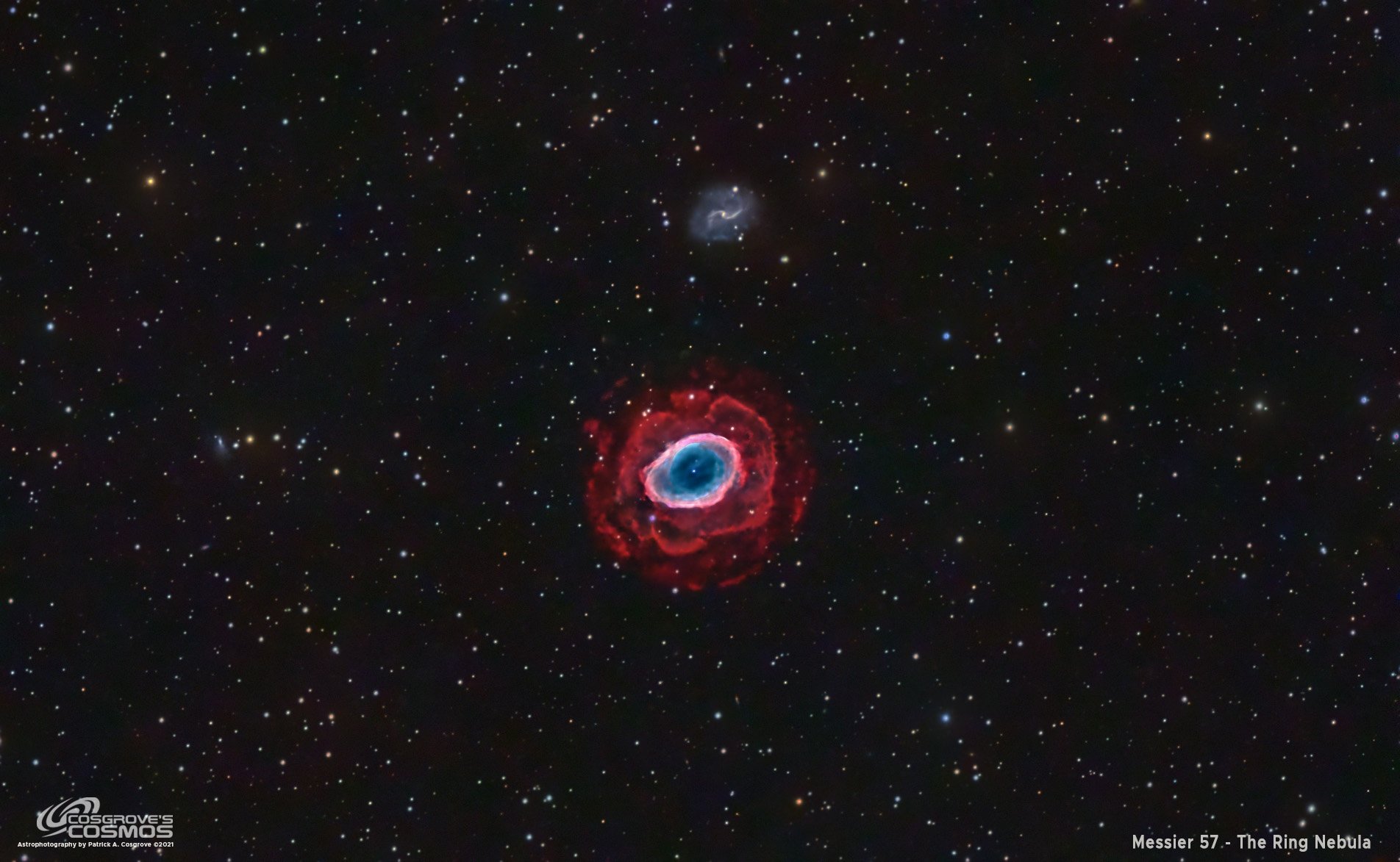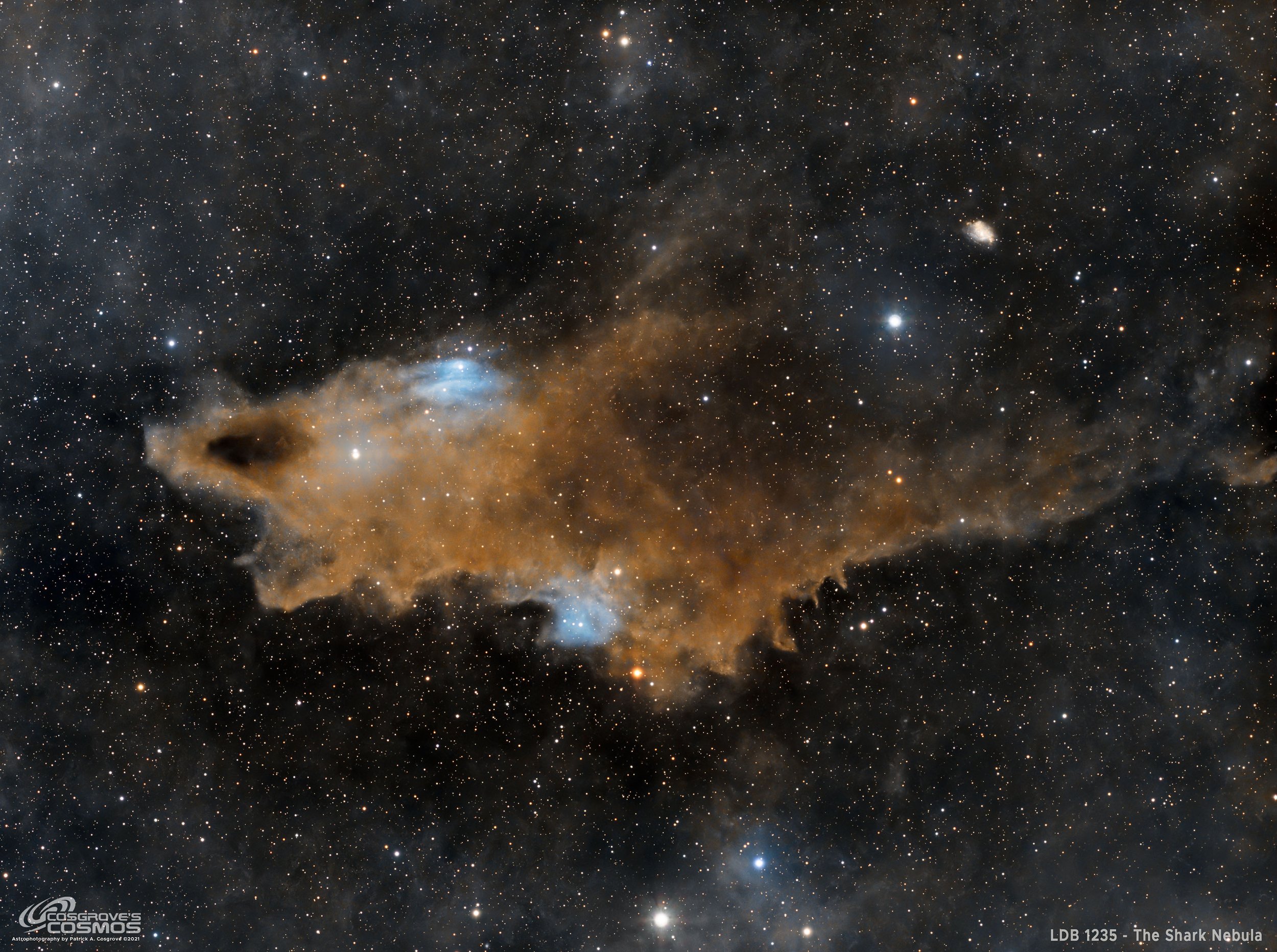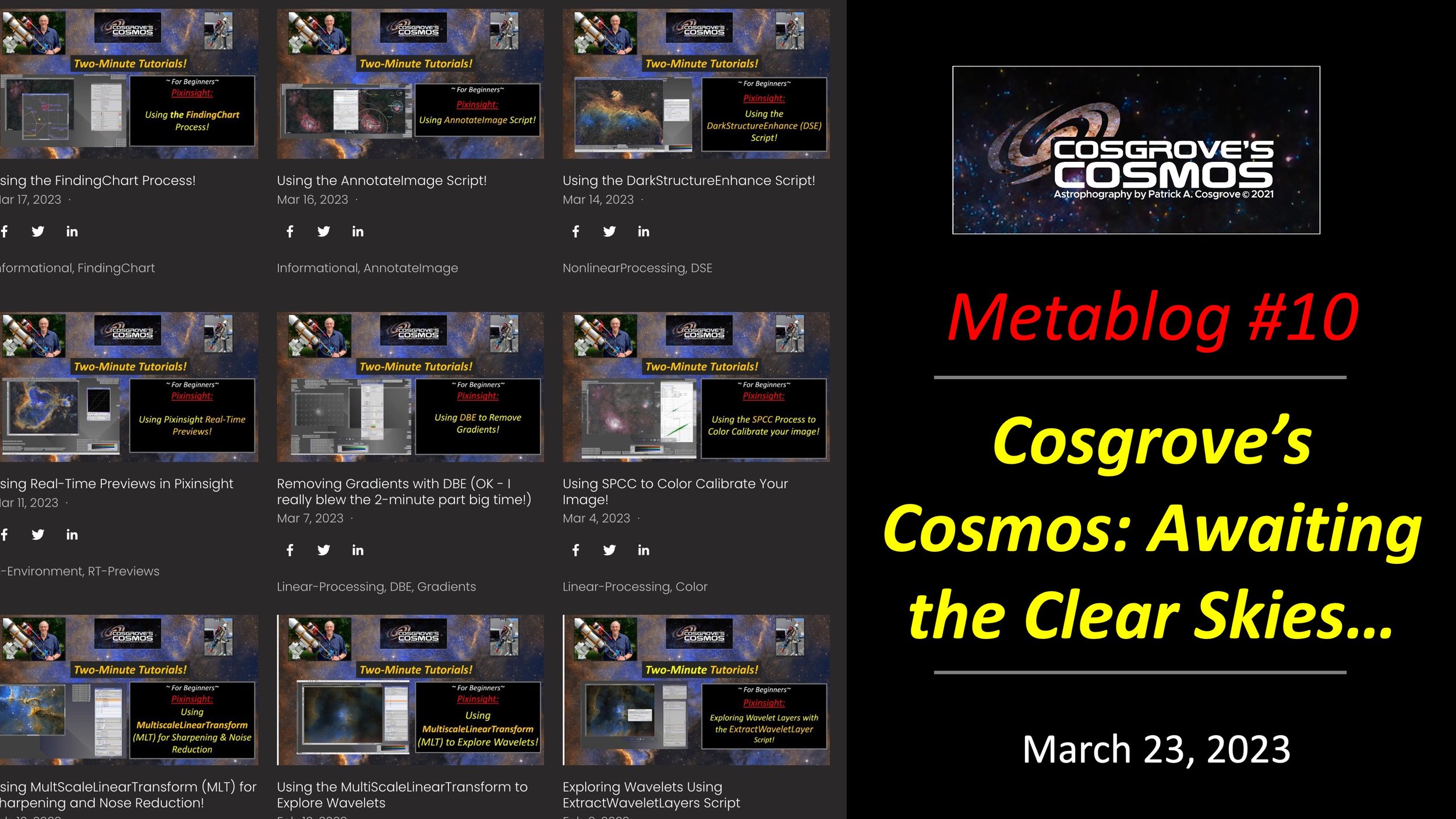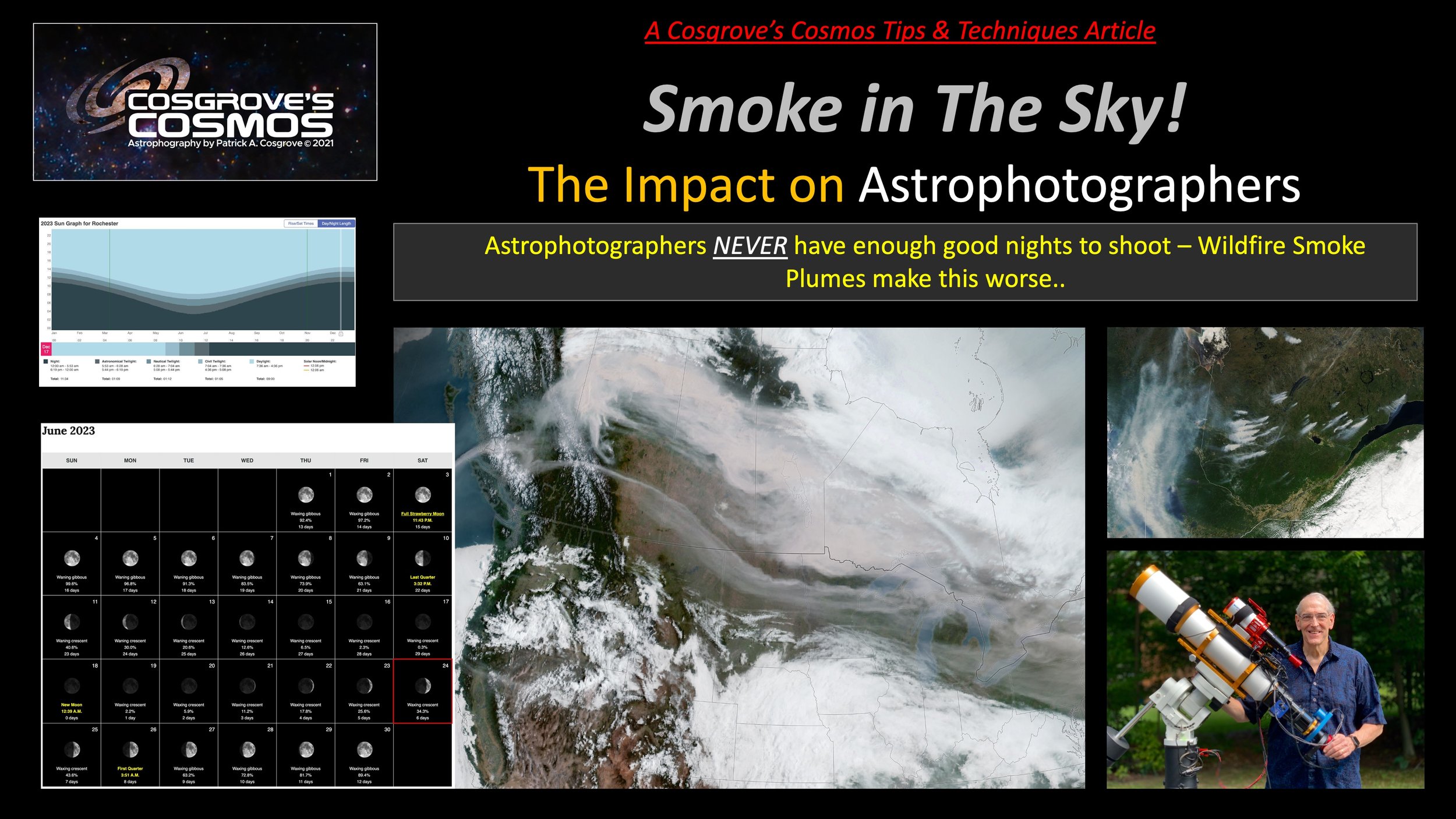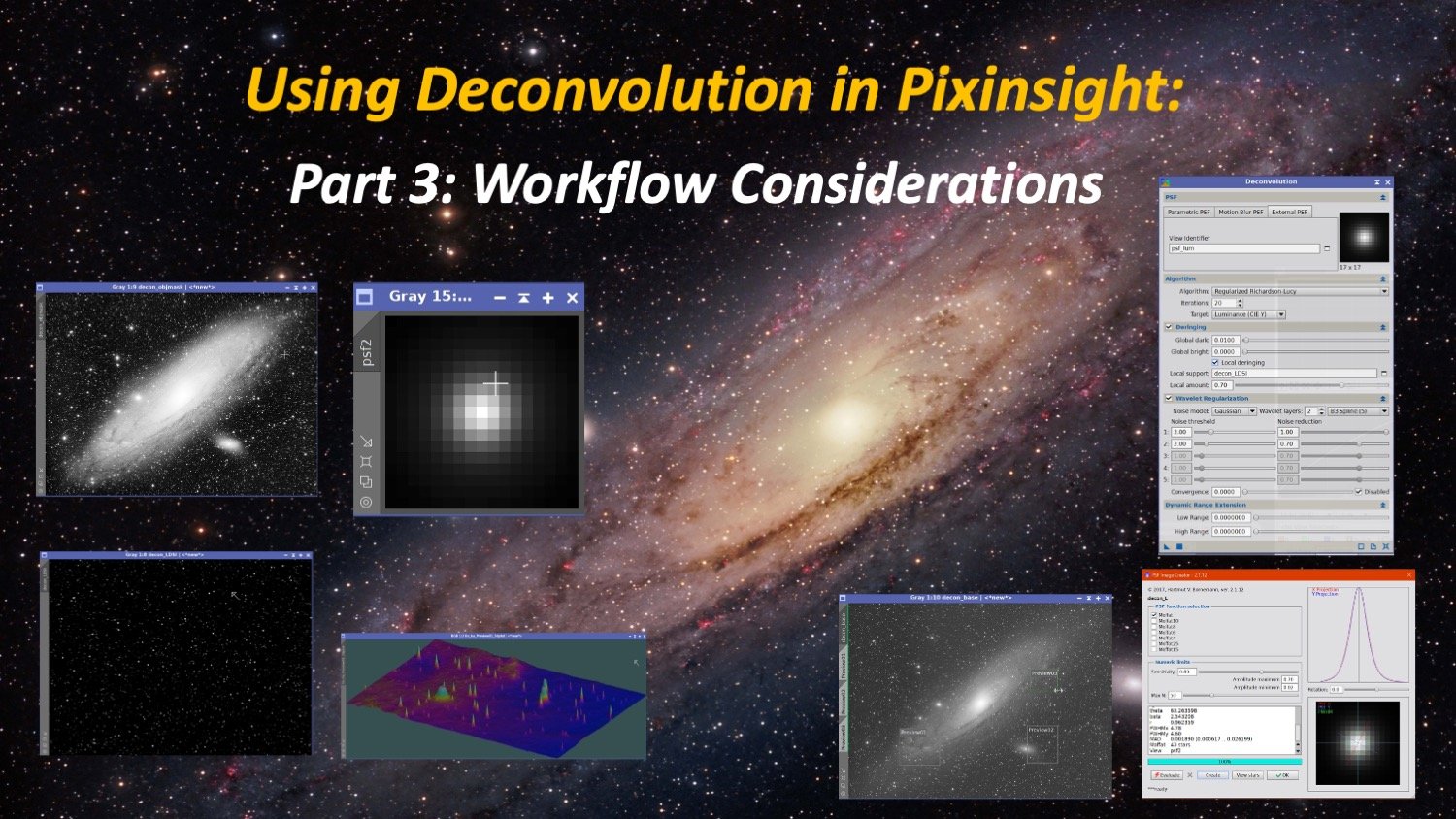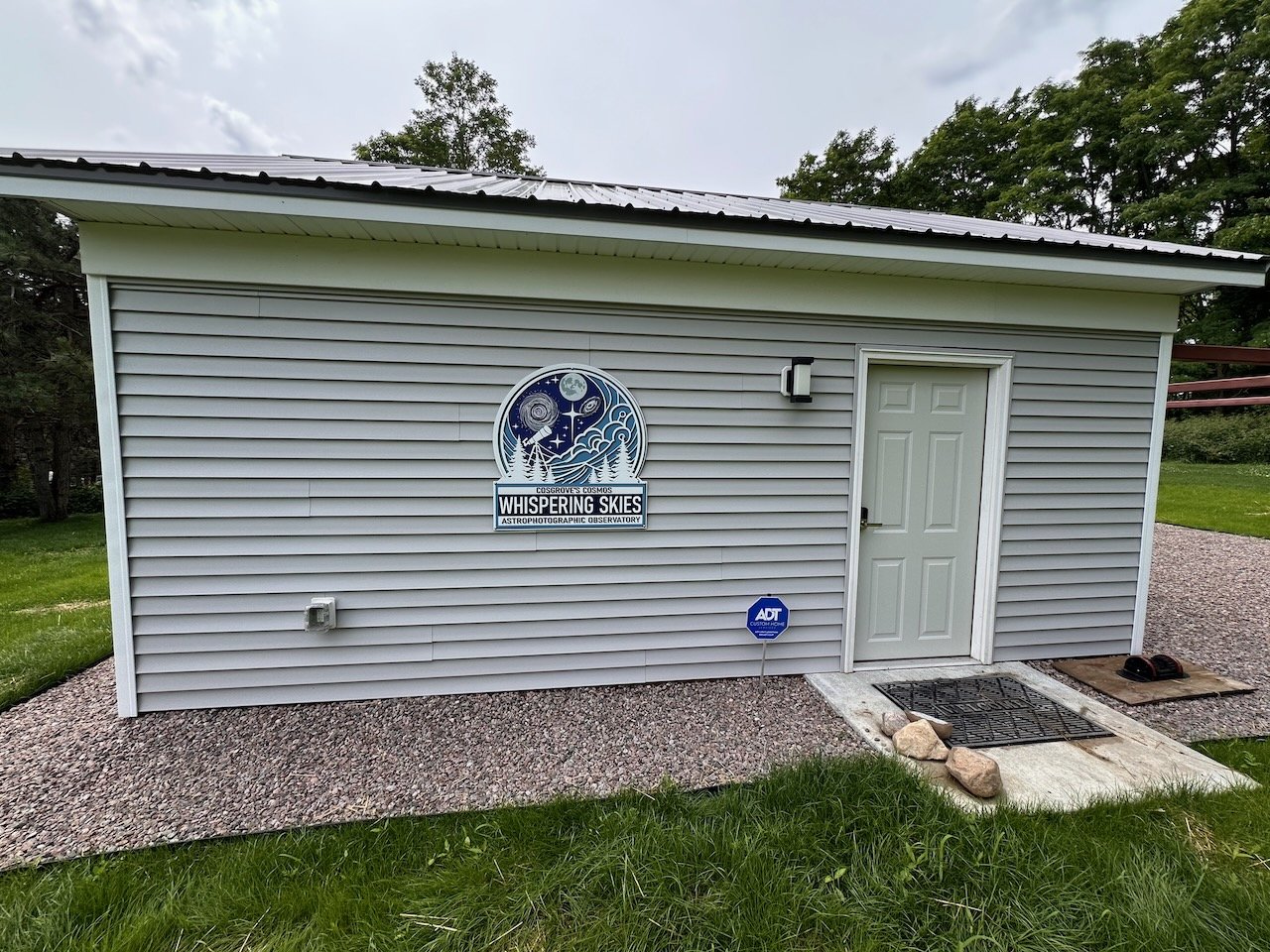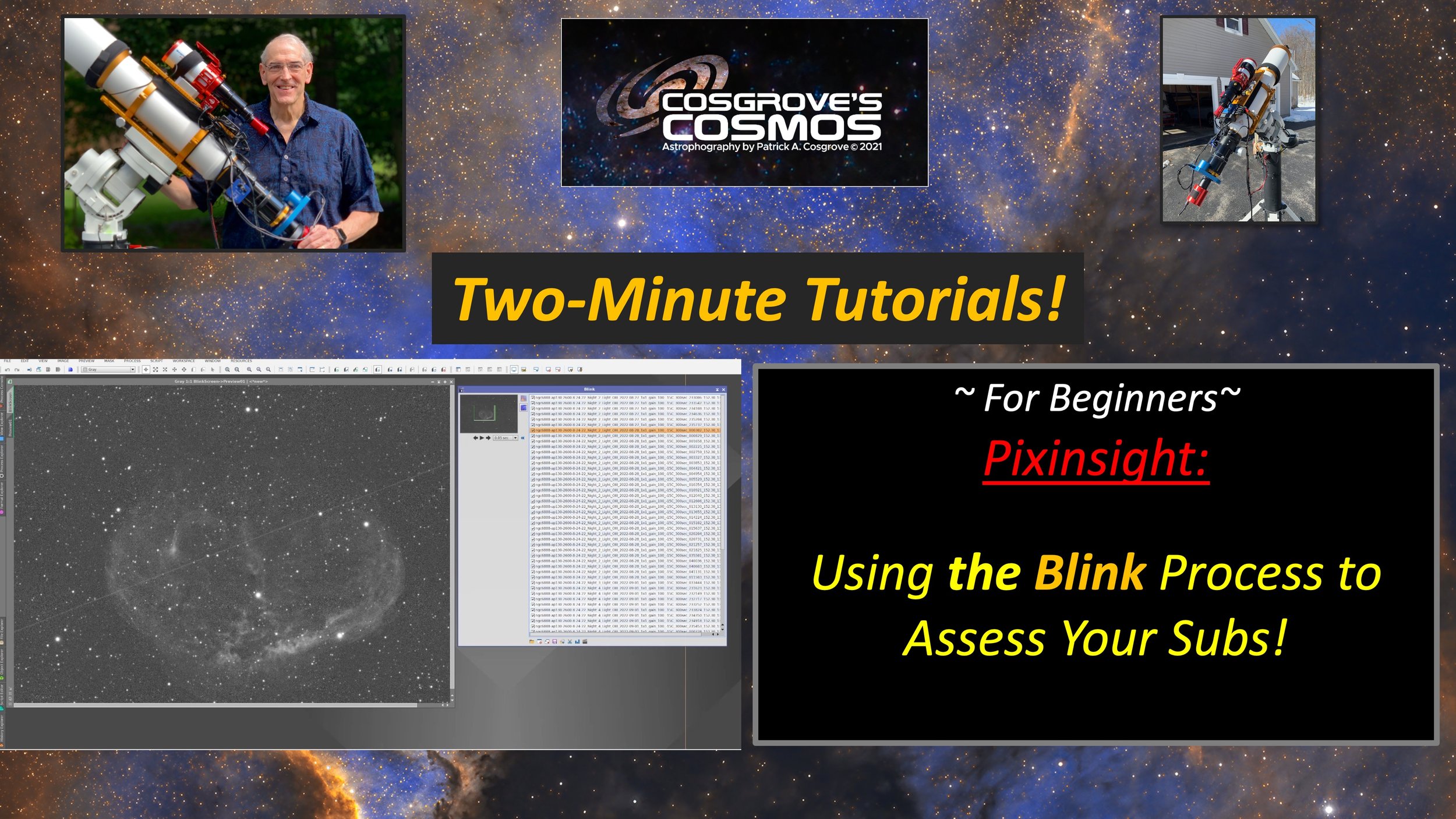~Home Page ~
One Man’s Journey Into Astrophotography
By Patrick A. Cosgrove
Welcome to Cosgrove’s Cosmos!
I created Cosgrove’s Cosmos so that I could share my images and the learnings I have made on this journey into the realm of Astrophotography. I am by no means an expert and I still have much to learn - but I am happy to share what I can with the hope that it will be of interest and perhaps even offer some help to those on their own journey.

This is me with my first of three telescope platforms - the William Optics 132mm FLT F/7 APO refractor.
Play Me: My new “Welcome and Introduction” video for this webpage and my Youtube Channel.”
What’s New?
Why Astrophotography?
Because it is a challenge. Because it is precise. Because it allows a person to capture amazing pictures of objects in our Universe that can’t easily be seen with the naked eye. Because it feels like magic. Because it adds a dash of the extraordinary to the common elements of our life.
I am an Astrophotographer.
I capture Ancient Light.
I listen to Whispering Photons.
I span the unfathomable reaches of time and space.
………..And I do it from my driveway!
The Scale of the Universe boggles the mind…
The stars in our local corner of the Milky Way Galaxy are so far away that it can take years for their light to reach us. The light from other objects in our own galaxy can take as long as 100,000 years to get here - depending on where they are located. But ours is not the only galaxy in the night sky - there are millions and millions of other galaxies and these are even further away. The light from these can take millions of years to reach us.
While stars can be bright, most of what is out there is very faint indeed. So faint that very little can be seen with our naked eyes… we just can’t catch enough photons with our eyes to trigger the sensation of sight.
To see what is out there, our eyes need some help.
A Telescope can help - it acts as a funnel - increasing the area that is catching photons and focusing them onto a smaller area - such as our eye.

A telescope is really just a big light funnel.
A Camera sensor can help - sensors can replace our eyes and - unlike our eyes - they can integrate light over longer periods of time and “store them away”.

A camera can store light over longer periods of time than the eye.
Astrophotography is about catching the thin stream of incoming Photons over time, and the painstaking processing of those faint signals - teasing them from the background noise - so that we may see the amazing things that populate our Universe.
Sparking the Imagination….
There’s something kind of awesome about capturing these images. Photons may travel for thousands or even millions of years - crossing the Universe and avoiding obstacles, gas, and dust - to finally enter the front of my telescope and to hit my camera sensor - to create a signal just barely above the noise level of the device.
These few photons - which have traveled so very far and for so very long - whisper to us and tell us of their home…
Astrophotographers must “ listen” very carefully to hear the stories they have to share…
Thank you for letting me share Journey into Astrophotography with you!
Patrick A. Cosgrove





















